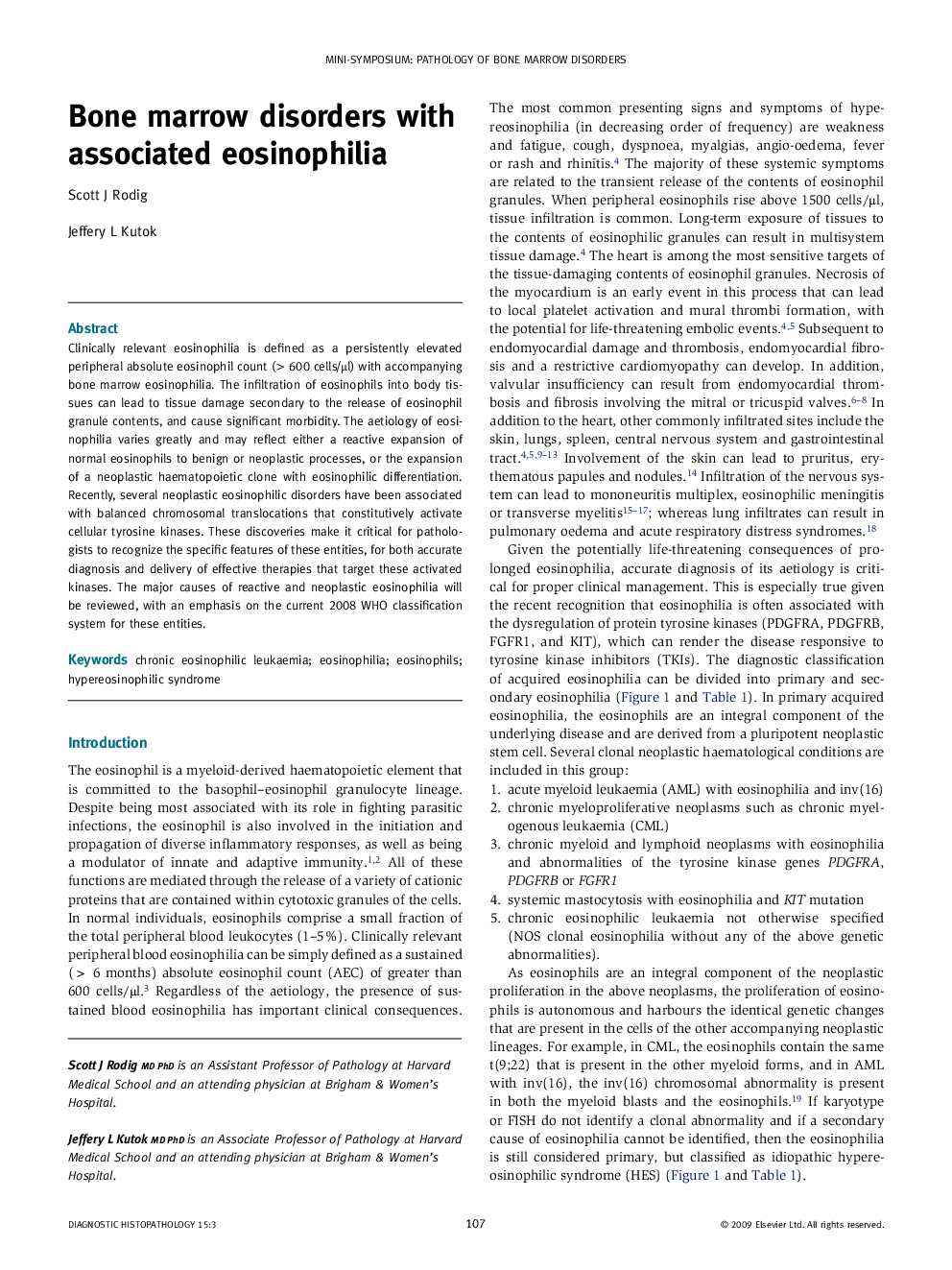| Article ID | Journal | Published Year | Pages | File Type |
|---|---|---|---|---|
| 4131627 | Diagnostic Histopathology | 2009 | 9 Pages |
Clinically relevant eosinophilia is defined as a persistently elevated peripheral absolute eosinophil count (> 600 cells/μl) with accompanying bone marrow eosinophilia. The infiltration of eosinophils into body tissues can lead to tissue damage secondary to the release of eosinophil granule contents, and cause significant morbidity. The aetiology of eosinophilia varies greatly and may reflect either a reactive expansion of normal eosinophils to benign or neoplastic processes, or the expansion of a neoplastic haematopoietic clone with eosinophilic differentiation. Recently, several neoplastic eosinophilic disorders have been associated with balanced chromosomal translocations that constitutively activate cellular tyrosine kinases. These discoveries make it critical for pathologists to recognize the specific features of these entities, for both accurate diagnosis and delivery of effective therapies that target these activated kinases. The major causes of reactive and neoplastic eosinophilia will be reviewed, with an emphasis on the current 2008 WHO classification system for these entities.
